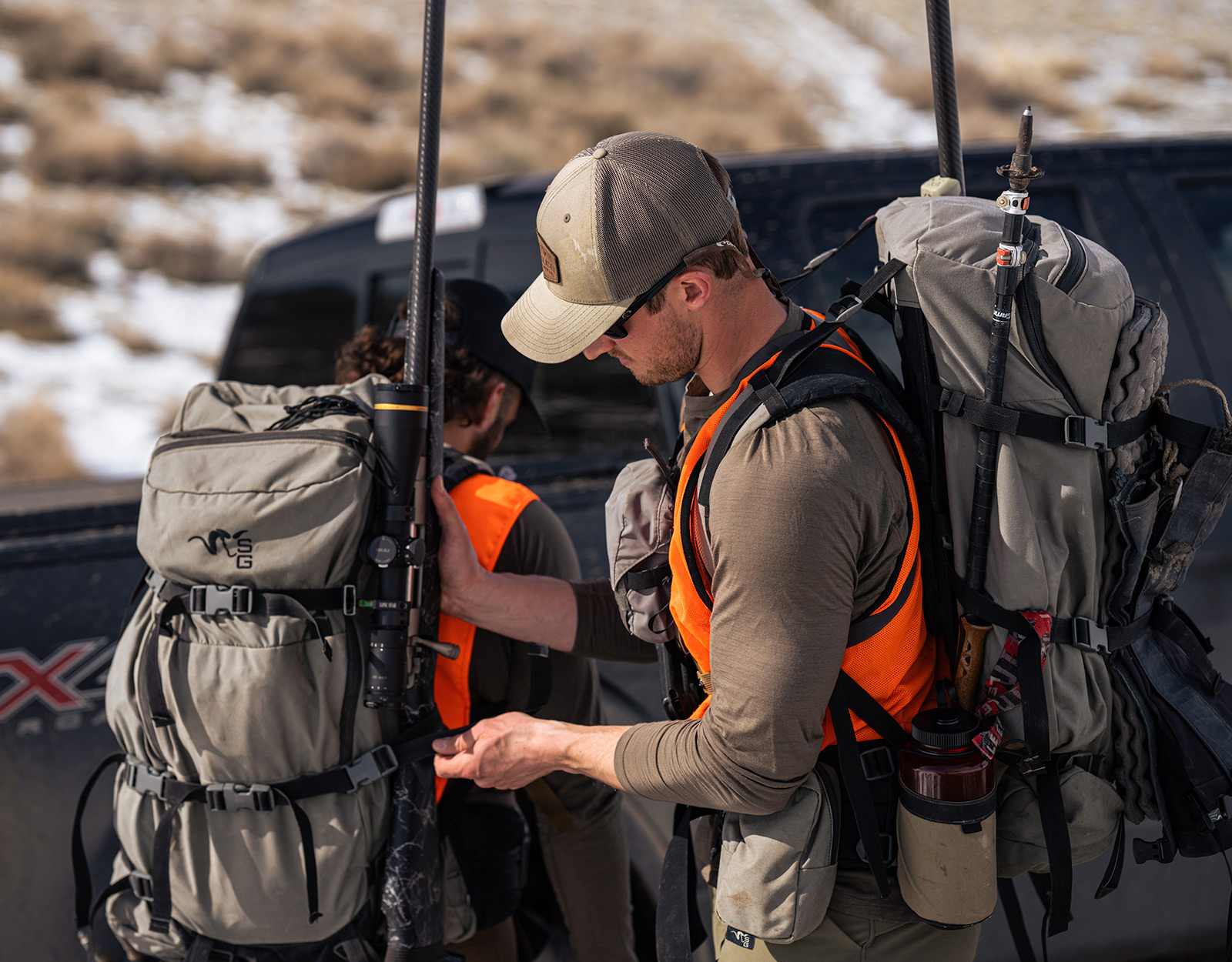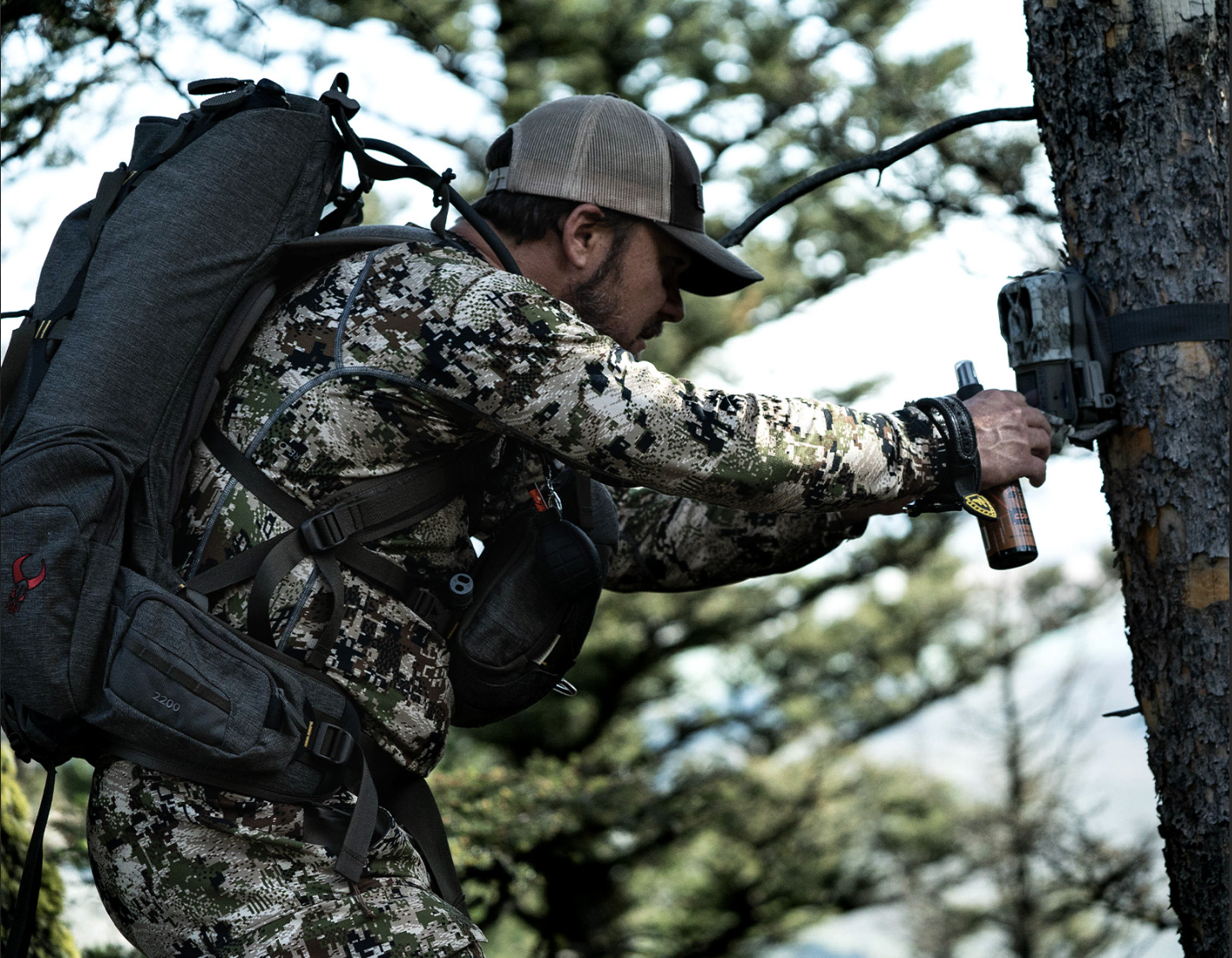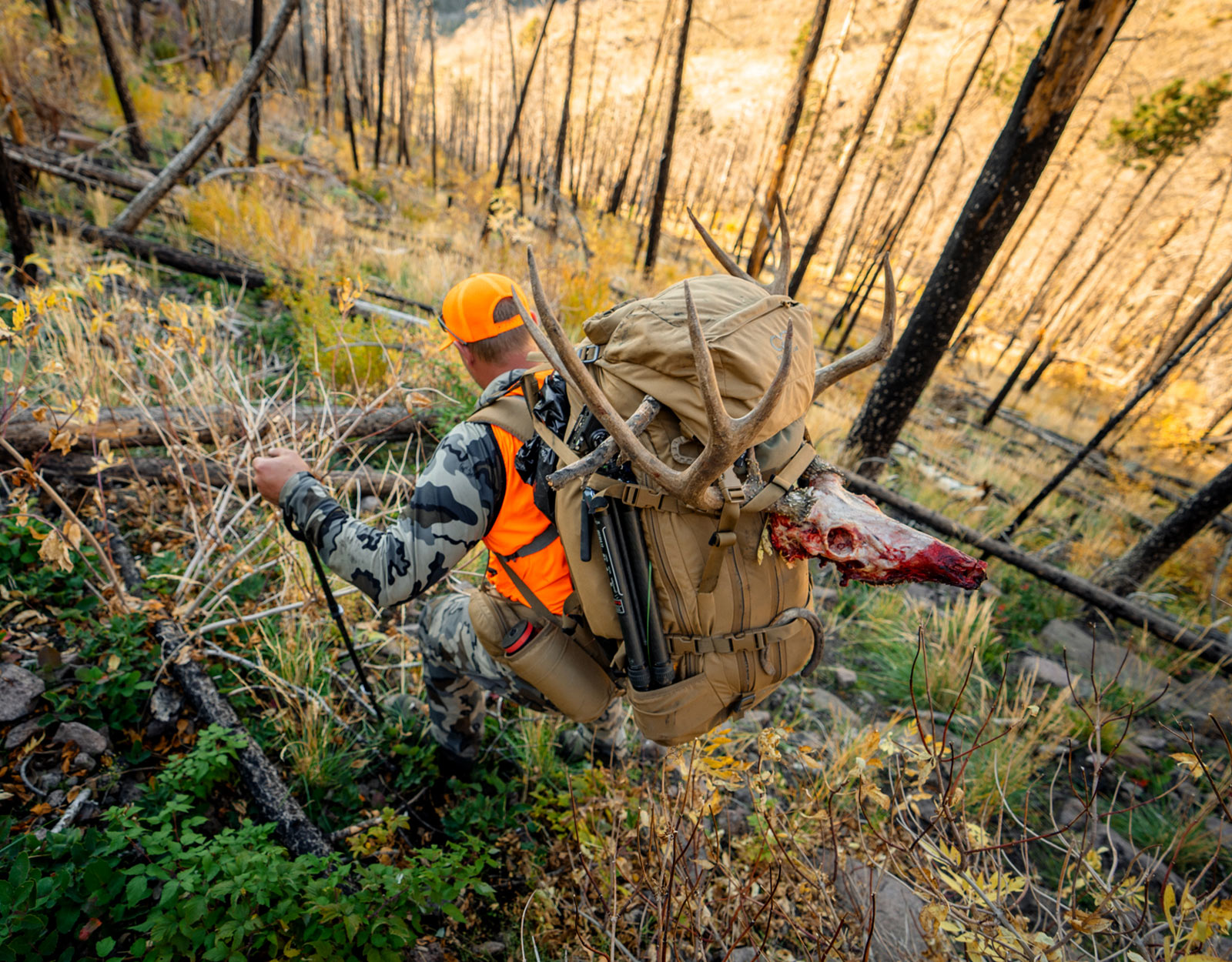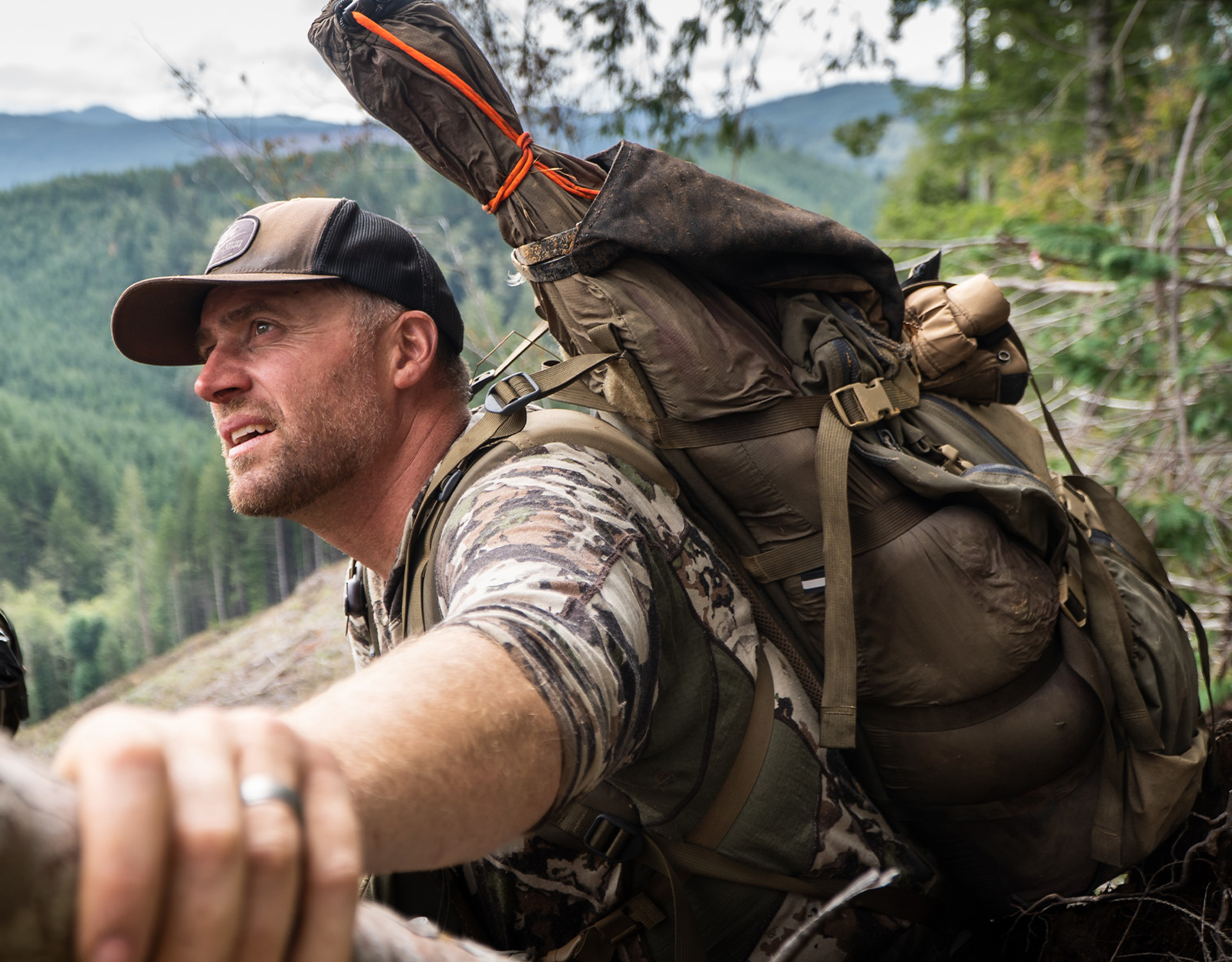Some mornings in the hunting woods just go right. It was 8:30 a.m. and I was standing over my biggest buck in awe. What an unreal experience. As I soaked in the moment, it hit me just how brutal it was going to be getting this deer out of here. Not only did I have to pack the deer, but also my camp. About 7 miles of rugged real estate sat between myself and the truck with no shortage of elevation gain and loss. Without a good big game hunting backpack, this task would be better described as madness.
The Purpose of a Hunting Backpack for Big Game
There are several different kinds of hunting backpacks on the market. Some are more suited for big game hunting and some are a better fit for small game hunting. There are packs made from the standpoint of a turkey hunter and others made more for the upland bird hunter. Whatever the hunting task is in the field, there is a backpack that reflects it. Of those categories, big game hunting backpacks seem to have the most questions surrounding them and their use. Not to mention, the demands they need to meet are much greater than others.
Big game hunting backpacks are not only meant to carry what you need for the time you’ll be in the field; they are also meant to carry out what is hopefully the big game animal you’ll be wrapping your tag on. These backpacks are made with comfort and organization in mind. Most big game hunting backpacks feature an internal frame capable of hauling very heavy loads—a far stretch in ability from your standard backpacking type of pack.
Most of these big game packs are also backcountry capable, meaning that you can backpack hunt with them. This is more of a size thing than anything, but it’s worth mentioning as big game hunters tend to be the ones venturing into the backcountry.

What to Look for in a Big Game Hunting Backpack
There are a few key things you’ll want to note when looking for a big game hunting backpack. Some of them are non-negotiable while others will more be a reflection of your personal preferences.
The size of your backpack is going to be something that reflects the purpose of that backpack to you, the hunter. If you’re planning on day-hunting from the truck, then something with a smaller cubic inch count will be sufficient. However, if you’re looking to backpack hunt for big game, you’ll want a much larger backpack.
A good rule of thumb to stick by is 1000 ci per day. So, if you’re looking to do mostly 3-day type trips, have at least a 3000 ci backpack. For 5-day trips, have at least a 5000 ci backpack. Throughout this, keep in mind that rules are made to be broken and this is just a guideline. I’ve personally gotten away with 9 days out of a 3600 ci backpack. It matters how you pack and what you pack.
Something else to note is proper sizing. Most big game hunting backpacks have different sized waist belts and some have different frame heights. It is vital to get properly sized for your backpack in order for that backpack to work properly for you. Your torso length and waist size are the big ones to know and most backpack companies will help you pick the right size based on your measurements.
Functionality
Functionality equals efficiency. The more functional your backpack is for you and your style of hunting, the more efficient you’ll be in the field. Consider things like horseshoe zippers vs. top entry. Having a lid vs. not having a lid. Is the backpack hydration capable? If you’re a person who enjoys organization, then a backpack with more pockets will suit you better. Think about whether you’re planning to carry your weapon on your backpack. Some backpacks are better suited for this than others. Furthermore, if you carry a sidearm with you, the waist belt will need to have some sort of attachment point for the holster of your pistol.
Load Lifter and Suspension Systems

A backpack is a chain of things that all work together to make hauling heavy loads more comfortable. This chain consists of your waist belt and lumbar pad, shoulder straps and sternum strap, and then frame and load lifters. These things, when used properly, will help evenly distribute weight, to make your day better.
In general, you want most of the weight on your waist. The shoulder straps will carry a small amount of weight, and the sternum strap will simply keep the width of the shoulder straps in place. Finally, the load lifters will help to “lift the load” even more off of your shoulders. They will also help pull the load in tighter to your back.
All of these things work together, and it’s incredibly important that you actually learn the proper way to put on a backpack for them to hit their full potential. You can have the best backpack in the world, but if you don’t know how to put it on right, you’re missing the mark.
Load Hauling

Lastly, a big game hunting backpack needs to have the ability to haul both your meat and your gear, which equals a very heavy load. The most common way backpacks achieve this is by the bag detaching from the frame and strapping the meat down in between the two. This puts the heaviest weight closest to your back, which is what you want. It also allows you to carry your gear, whether it’s backpacking or day gear, in the actual bag portion of your backpack. Personally, I’ve also used this feature to cram food in between the bag and frame to get more backcountry nights out of a smaller bag.
There are also packs that don’t detach from the frame, and these will absolutely work, but keep a couple of things in mind. One, if you’re backpacking, you literally might not have room in the bag for meat. Two, whatever other gear is inside of the bag will likely get bloody when hauling meat.
No matter which way the pack hauls meat, it needs to not only possess the ability to do so, but keep it properly contained throughout the process. Buckles need to remain locked, straps need to remain tight, and the overall structural integrity needs to remain solid.
onX Favorite Hunting Backpacks for Big Game

There are quite a few companies that make big game hunting backpacks. The ones that we’ve enjoyed the most here at onX come from Exo Mountain Gear. The new K4 2200, 3600, 5000, and 7200 cover the gamut in size, functionality, suspension, and load-hauling abilities. These hit all of the marks, and then some, of what makes a good big game hunting backpack. The K4 frame is interchangeable between all of the sizes as well. You can take the frame on the 3600 and put it right onto a 7200 if you’re planning a longer duration in the field. To contrast that, you could also slap a 2200 on the K4 frame for day-hunting purposes. It’s about as solid of a system as they come.
Whether you’re day hunting from the truck or hiking 15 miles deep into the backcountry for 10+ days, these packs will do it in stride. We’ve got the miles under them and the full freezers to prove it, too.